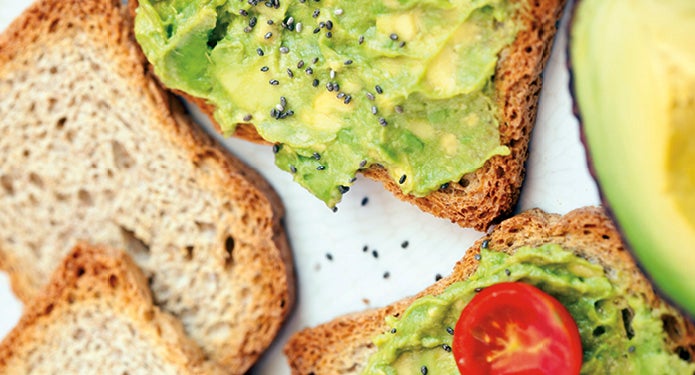Recent guidelines suggest that providing a “diabetic diet” during in-home or hospital care is not required.
The prevalence of diabetes in North America has never been higher. With an estimated 9.3% of North Americans living with diabetes and expectations of diabetic diagnoses to increase through 2050, this is a significant and growing concern. If your menu is not already addressing the needs of this large group, now is the time to start.
While the clinical and nutritional recommendations for individuals living with diabetes change slightly over time, there are many principles and strategies to help guide menu development within your healthcare setting.
Recent guidelines suggest that providing a “diabetic diet” during in-home or hospital care is not required. Instead, the recommendation is to provide a consistent amount of carbohydrates at every meal and snack on your “regular” menu. This will ensure it’s suitable for those living with and without diabetes.
For seniors with diabetes living in healthcare settings, the recent recommendations are even more specific, suggesting that there is no added benefit to serving a diabetic diet; instead, they should be receiving the regular, consistent carbohydrate diet.
Carbohydrates are king
When developing a menu for your healthcare setting, try to provide a consistent amount of carbohydrates at every meal and snack. Incorporating this strategy increases your menu’s suitability for those living with and without diabetes.
Once you decide whether or not you need to provide a diabetic diet to your population, you can focus on making the menu as effective and efficient as possible. One way to do this is to liberalize your diets, a concept that is becoming increasingly common in healthcare settings. For more than just diabetic diets, the idea behind liberalization is to loosen the food restrictions you adhere to when providing substitute items on your menu. This can improve palatability of the food you serve, thereby increasing guest satisfaction and food intake. This is especially important for those working with seniors in long-term care, where weight loss is a constant threat to their health. If you are interested in learning more about liberalizing your diets, our training presentation on this topic outlines how to implement this principle at your facility (see the sidebar for how to get access to the presentation).
As you are building your menu, there’s one key item you should take into account, fibre. Fibre is a very important nutrient for those with diabetes, because it helps slow the digestion of carbohydrates. This means that it helps prevent harmful spikes in blood sugar after eating. Your menu should aim for 25-50g of fibre per day, the recommended amount for those with diabetes. This may sound like a lot, but if you include whole grains, vegetables, and fruit at each meal, it’s doable.
Fibre-Forward Menu Ideas
- Wheat bran in hot cereals
- Whole grain bread/pasta
- Prunes/prune juice
- Fruit offered at each meal
- Vegetarian entrees featuring beans and/or lentils
Your menu should also include standardized serving sizes for each recipe. This not only ensures that those with diabetes are receiving consistent and prescribed amounts of carbohydrates, but it can prevent over-portioning, which can save money. This may require some staff training, but it’s worth the investment. After, or in addition to, training, reinforce the portion-control guidelines by posting a chart within your staff’s eyesight.
Appropriate substitute items should also be taught to serving staff in your location. If items with carbohydrates are replaced with those that do not have carbohydrates, this can pose problems for individuals with diabetes. See below for starchy vegetables that require an alternate starch for those on a diabetic diet.
Do the Swap
For diabetics, you’ll want to swap these starchy vegetables for another starch. The key is to maintain same amount of carbohydrates between the original and it’s substitute.
- Potatoes
- Sweet Potatoes
- Squash
- Peas
- Corn
- Pumpkin
- Parsnip

























